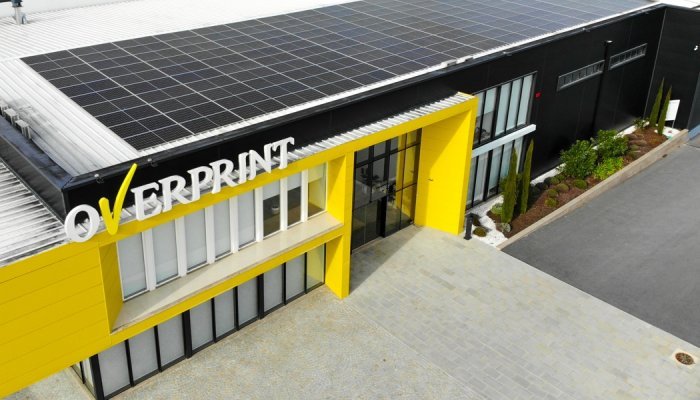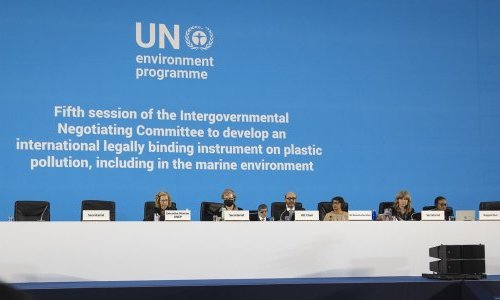Regulatory changes, new contact details, modified formulas... All these can make a brand’s stocks of unused, but already printed packaging become obsolete. Over the past 30 years, Overprint France has offered an alternative solution to destruction, by directly targeting the areas to be corrected, regardless of the packaging type.
“We help users who own packaging in need of transformation, whether it be primary or secondary, flat, or already formed. We can handle all types of materials, cardboard, plastic, glass, or aluminium, whether it be for jars, bottles, tubes, or folders... but only parts presenting irregularities,” explains Yves Ismaël, the company’s founder.
2,500 tonnes of packaging per year
As the only company to have industrialized the process, Overprint relies on an overprinting technology which consists in hiding the concerned areas with the same ink colour as the one at the bottom of the materials, and then reprinting the new text on the hidden parts.
“In 2023, we saved over 2,500 tonnes of packaging of all types to revive them. We work on several million pieces every year: half of them are empty, the others are already filled in,” adds Yves Ismaël.
As regards products already packaged, the risk for the formula to degrade is avoided, since no heat source is used for drying ink.
Other than generating no waste, the solution can actually help brands gain time. While remanufacturing can take from 8 to 18 weeks, Overprint France restores 100,000 to 200,000 units in less than a week. In addition, the cost represents one-third of the purchase price of the customer’s packaging, and it is still lower than for manufacturing.
Developing in North America
Based in the South-West of France, Overprint France works with big names of the cosmetics, perfumes, and pharmaceutical industries, in France and the US. The company has a production unit in Portugal, which is fitted with 300 PV panels to achieve energy self-sufficiency, as well as a site based in Tunisia for products with lower added value.
A third site project is under way in the United States: it should be operational in 2026.
































